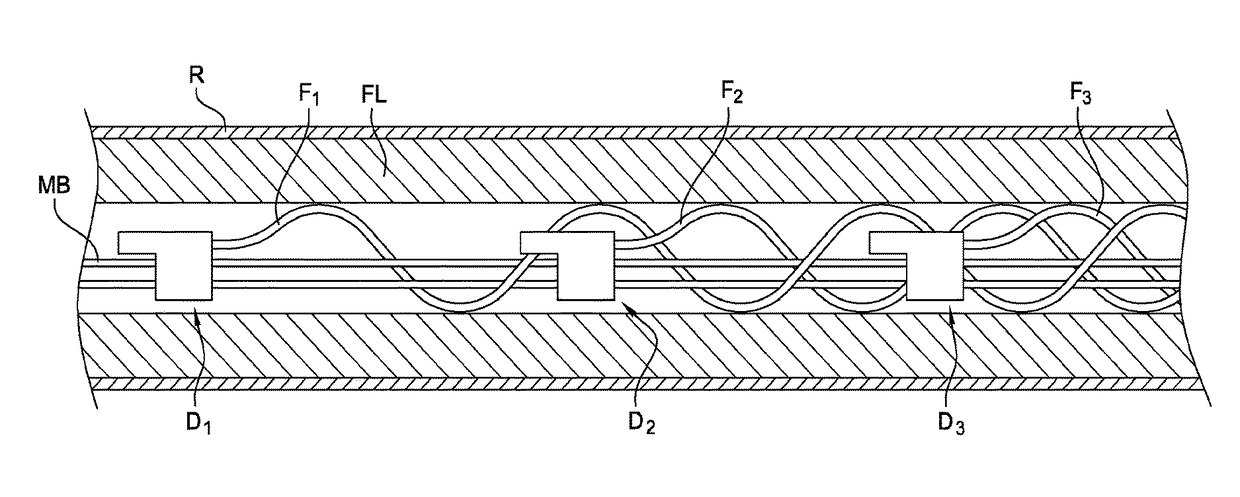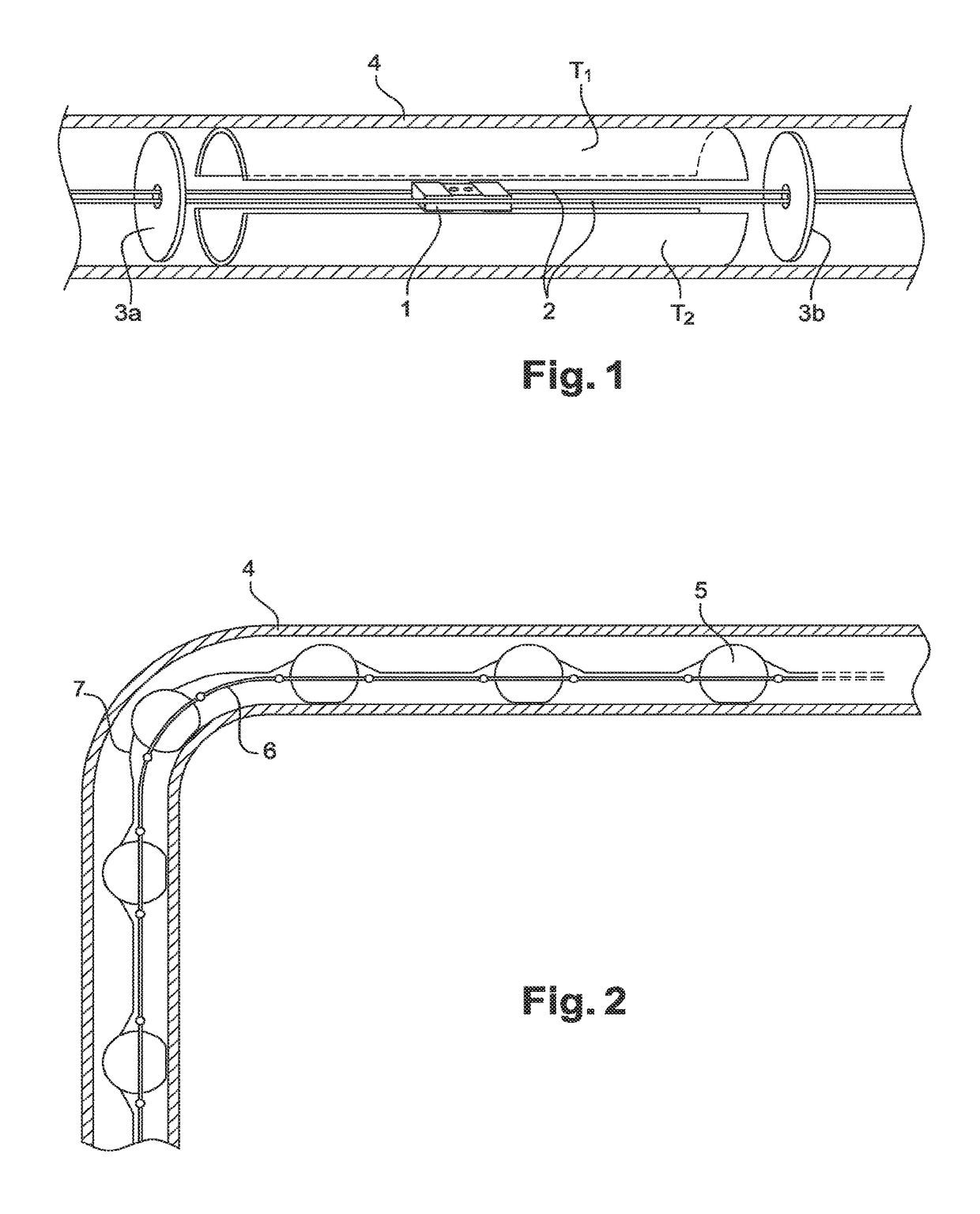Device for detecting radiation and associated detection device
- Summary
- Abstract
- Description
- Claims
- Application Information
AI Technical Summary
Benefits of technology
Problems solved by technology
Method used
Image
Examples
Embodiment Construction
[0052]FIG. 3 represents a schematic diagram of essential elements which make up a radiation-detecting device according to the invention and FIGS. 4A-4D represent detail views of the detecting device of the invention.
[0053]The device comprises a set of OSL detectors Di (i=1, 2, 3, etc.) placed in the flexible cable FL. The detectors Di are connected to each other using a support cable MB. Each detector Di is equipped with a beam of fibres Fi. FIG. 4C represents a longitudinal cross-section view of a detector D. FIG. 4D represents a transverse cross-section view of the same detector.
[0054]The flexible cable FL is preferentially an interlocked metal hose. The interlocked metal hose can be of the single lock or double lock type. The single lock hose has a greater flexibility and a higher internal / external diameter ratio than the double lock hose, but its mechanical strength is lesser.
[0055]In practice, for dismantling applications, a double lock hose such as that represented, for exampl...
PUM
 Login to View More
Login to View More Abstract
Description
Claims
Application Information
 Login to View More
Login to View More - R&D
- Intellectual Property
- Life Sciences
- Materials
- Tech Scout
- Unparalleled Data Quality
- Higher Quality Content
- 60% Fewer Hallucinations
Browse by: Latest US Patents, China's latest patents, Technical Efficacy Thesaurus, Application Domain, Technology Topic, Popular Technical Reports.
© 2025 PatSnap. All rights reserved.Legal|Privacy policy|Modern Slavery Act Transparency Statement|Sitemap|About US| Contact US: help@patsnap.com



